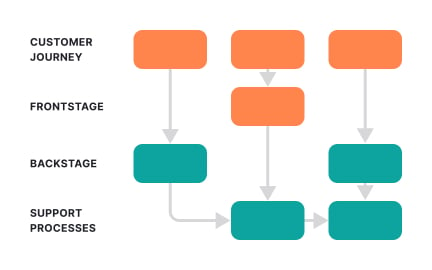Best Practices
Best practices are proven methods and guidelines that help teams design, manage, and deliver digital products effectively, consistently, and with high quality.

Best practices are established approaches that have shown consistent results over time. In design and product management, they serve as shared guidelines that teams use to improve outcomes, reduce risk, and maintain quality. While not rigid rules, best practices provide a reliable foundation for decision-making in complex environments.
In UX/UI design, best practices often relate to usability and accessibility. Following principles such as maintaining consistent navigation, ensuring strong color contrast, and using clear typography creates products that are easier for users to understand and interact with. These guidelines improve user satisfaction by minimizing confusion and friction.
For product managers, best practices provide direction in areas like roadmap planning, feature prioritization, and stakeholder communication. Using structured methods such as RICE or MoSCoW prioritization, along with transparent progress updates, ensures alignment across teams. This consistency makes it easier to deliver products that meet both business objectives and user needs.
Real-world examples highlight the value of best practices. Airbnb, for instance, maintains strict design guidelines to ensure visual consistency across its platform, which builds trust and familiarity for users. Similarly, Atlassian promotes best practices in agile teamwork, sharing resources that guide teams worldwide in improving collaboration and delivery. These examples show how best practices can scale across organizations.
It is important to note that best practices are context-dependent. What works for one product or company may not be ideal for another. For instance, a mobile-first design approach is widely accepted as a best practice, but in industries where desktop usage dominates, prioritizing desktop experiences first may be more effective. Adapting best practices to specific contexts is part of applying them responsibly.
Another critical element is that best practices evolve. As technology, tools, and user expectations change, practices that were once effective may become outdated. For example, skeuomorphic design was once considered a best practice because it made interfaces feel familiar, but modern users now prefer flat or minimal styles that prioritize efficiency. Staying updated is essential for relevance.
Best practices also extend to team operations and collaboration. Establishing guidelines for documentation, version control, and testing ensures smoother workflows.
Key Takeaways
- Best practices are proven methods that guide design and product work.
- In UX, they support usability, accessibility, and consistency.
- In product management, they improve planning, prioritization, and alignment.
- They must be adapted to context and updated as technology evolves.
- Serve as a balance between reliability and creative innovation.
Best practices reduce uncertainty by offering guidelines that have worked in similar contexts before. In design, they ensure products are usable, accessible, and familiar to users, which speeds up learning and improves satisfaction. Following them prevents teams from repeating mistakes others have already solved.
For example, using best practices in navigation design ensures users can quickly find what they need, improving engagement and reducing drop-offs. These small improvements compound into stronger overall product performance.
Not necessarily. Best practices provide a baseline that ensures functionality and clarity, but they do not prevent teams from experimenting. By securing the essentials, teams are free to innovate in areas where differentiation matters. The key is balancing adherence to proven methods with exploration of new approaches.
For instance, a product might follow accessibility best practices while innovating on unique interaction patterns. This way, users benefit from reliability while still experiencing novelty.
Teams must treat best practices as living guidelines rather than static rules. Regular reviews, industry research, and user testing help ensure practices remain effective. Many organizations maintain internal playbooks or design systems that are updated as new insights emerge.
By fostering a culture of learning, teams can adapt best practices as technology evolves. This keeps them aligned with user expectations and prevents reliance on outdated methods.
Recommended resources
Courses

UI Components I

UI Components II

Common Design Patterns
Lessons

Theory of Design Principles

Usage of Design Principles

Login & Signup Flows
Tutorials

11 Best Practices for Designing 404 Pages

How To Celebrate Failures With Your UX Team

A Guide to Conducting Effective Usability Testing
Projects

Joblet Hire - Profile Page

Professional Profile Page Design













